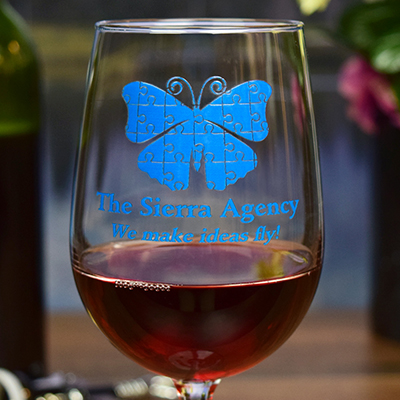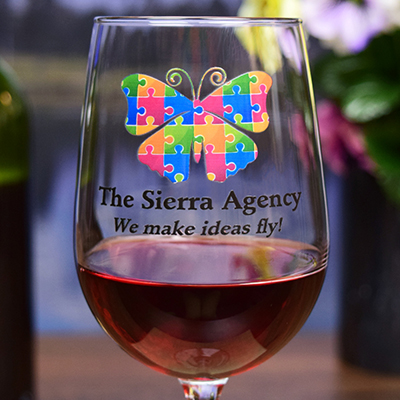- Home
- Photo Engraving

Photo Engraving
Customers often supply photographs to us, and ask that we use them for engraving purposes. We don’t generally recommend photographs as the best type of artwork for engraving….typically, we suggest single color “line art” or silhouette images. However, we may be able to get a good result with some photos. If you have any questions about engraving photos, or if you would like for us to view a photo and advise you on its suitability, feel free to let us know!
(If you are instead looking for a full color photo on a glass, please consider our digitally printed products! Digital printing does have full color capability).
We have provided some examples here to help you visualize how a photograph might look when engraved. We have used glass as our sample medium, but similar effects are the same for wood, marble, or terra cotta.
Glass (as well as the other materials mentioned) only turns a single color when engraved….in the case of glassware, it is frosted white. Photos, however, typically contain dozens or even hundreds of different colors and shades. Even photos that are “black and white” are actually made up of many different greyscale shades. When working with only a single color, it just isn’t possible to retain all of the details of a photograph.
We first prepare photos for engraving by running them through a graphics program. We end up creating an image composed of only “black pixels” and “white pixels” to replace all of the different shades. We will then photo invert the image (in the cases of marble and glass) and use it for engraving. Why the photo inversion? It is because there is a photo negative effect with these mediums when they get engraved. We will engrave the parts of the image that are black, but then those parts will end up looking white. We avoid a “photo negative” appearance by inverting the image first, and then using that.
What are the best types of photos to use? The most direct answer is this: simple ones. Photos with a simple subject matter (like the close up of just one person’s face) will produce a much better result than complicated photos. Nice, even lighting is also recommended…so that there isn’t a whole lot of shadowing in the image. Also, images with a lot of contrast work best. For example, the photo of a dark-haired girl against a light colored backdrop will work better than that same dark-haired girl against a black background.
What type of photos do we not recommend? Complex photos (such as a group of people standing in front of a complicated background) will prove difficult, as will those with detailed objects that are small in size in the photo. Also, photos with lots of different shades of the same color won’t translate very well, nor will photos where there is a significant amount of shadowing (such as a face half in the sun and half in the shadow). Also, if there are similar colors that really need to be seen to preserve the image detail, then there may be a problem….for example, a close up of a bouquet of different colored flowers.
“A picture is worth a thousand words,” so here are some examples of actual photo translations. On the left we have an original photograph, and on the right we have some photos taken of an engraved translation.
SAMPLE PHOTOGRAPHS
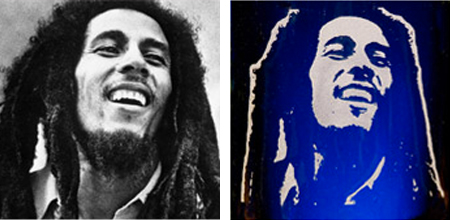
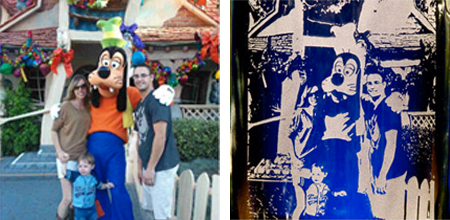


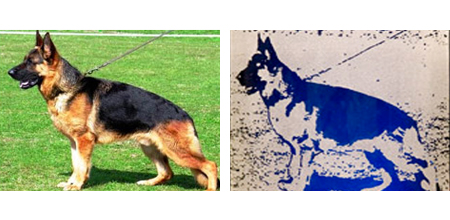
We hope that these samples are useful to show what to expect from photo engraving. Yes, some photos can produce a very nice effect….but there are also some limitations to be aware of. There are some photographs that we will recommend against using for engraving purposes.


